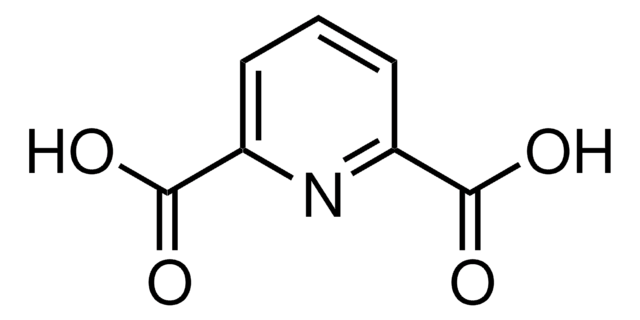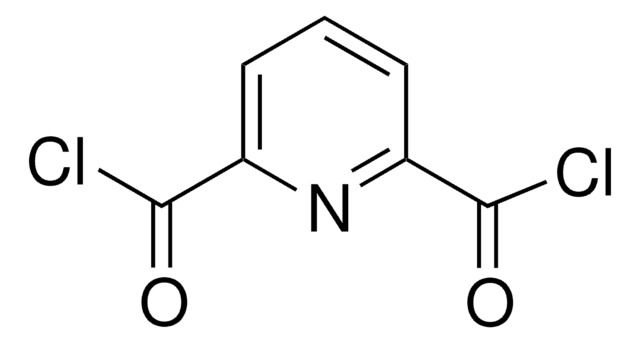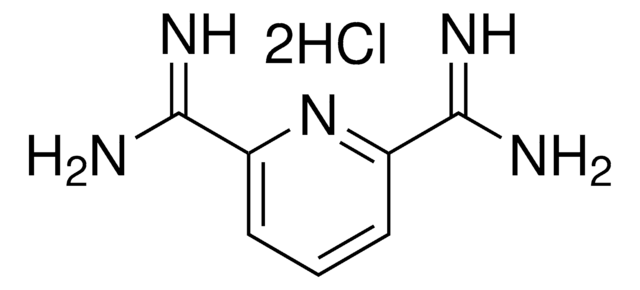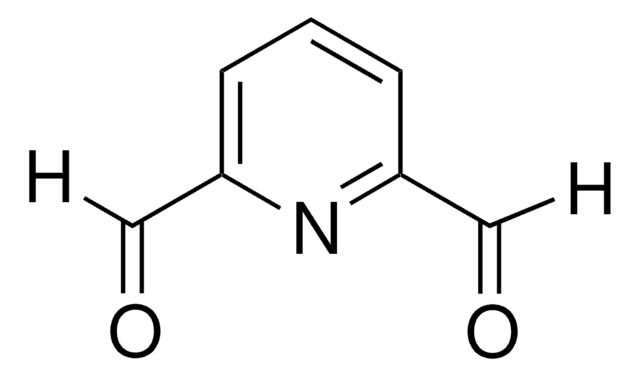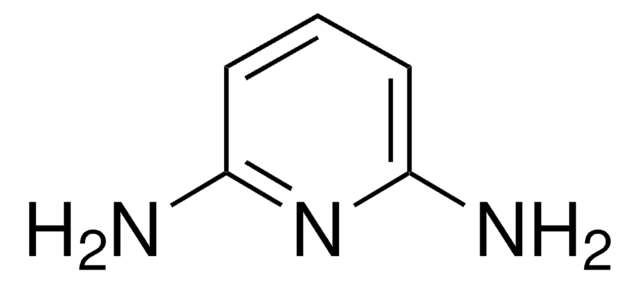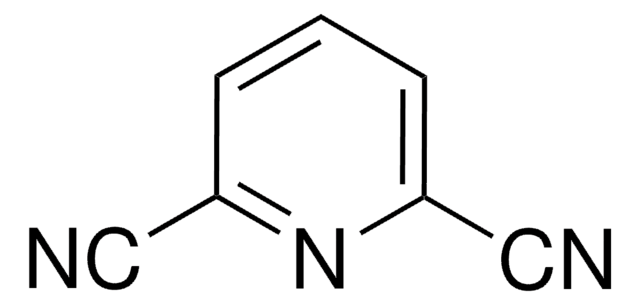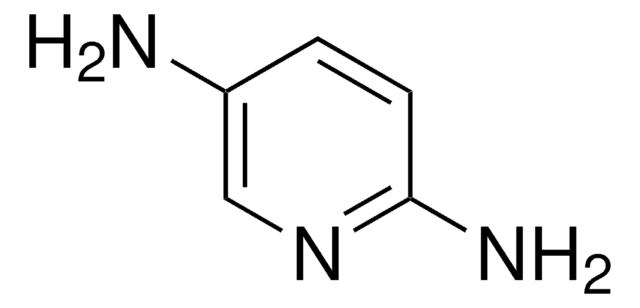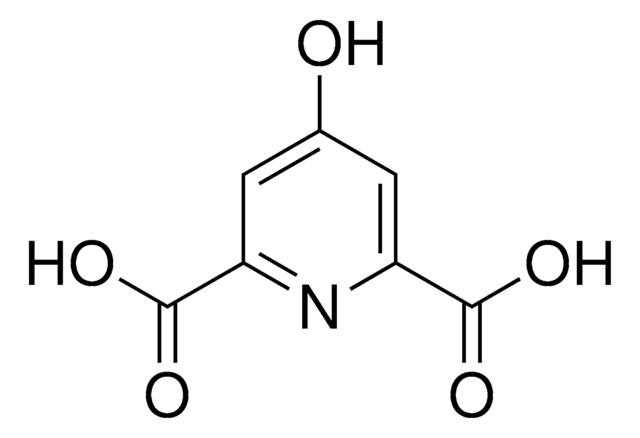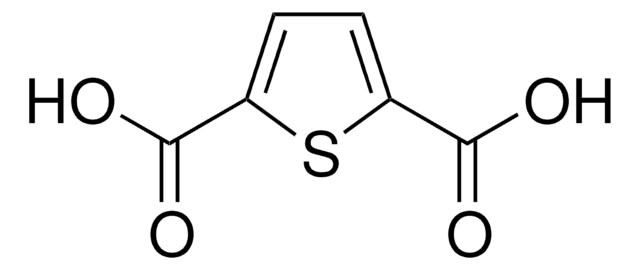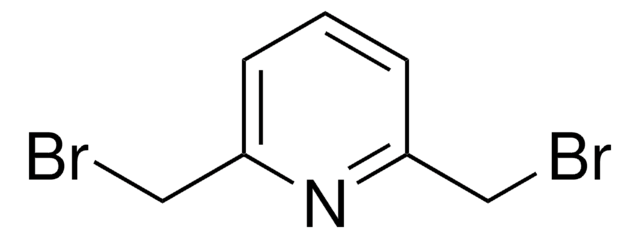Alle Fotos(1)
Wichtige Dokumente
464902
2,6-Pyridindicarboxamid
97%
Anmeldenzur Ansicht organisationsspezifischer und vertraglich vereinbarter Preise
Alle Fotos(1)
About This Item
Empirische Formel (Hill-System):
C7H7N3O2
CAS-Nummer:
Molekulargewicht:
165.15
MDL-Nummer:
UNSPSC-Code:
12352100
PubChem Substanz-ID:
NACRES:
NA.22
Empfohlene Produkte
Assay
97%
mp (Schmelzpunkt)
317 °C (dec.) (lit.)
Funktionelle Gruppe
amide
SMILES String
NC(=O)c1cccc(n1)C(N)=O
InChI
1S/C7H7N3O2/c8-6(11)4-2-1-3-5(10-4)7(9)12/h1-3H,(H2,8,11)(H2,9,12)
InChIKey
UUVCRNTVNKTNRK-UHFFFAOYSA-N
Allgemeine Beschreibung
2,6-Pyridinedicarboxamide is an excellent tridentate ligand for transition metals (Cu2+, Ni2+).
Anwendung
2,6-Pyridinedicarboxamide may be used in the preparation of new molecular turnstiles based on Sn-porphyrin derivatives.
Signalwort
Warning
H-Sätze
Gefahreneinstufungen
Eye Irrit. 2 - Skin Irrit. 2 - STOT SE 3
Zielorgane
Respiratory system
Lagerklassenschlüssel
11 - Combustible Solids
WGK
WGK 3
Flammpunkt (°F)
Not applicable
Flammpunkt (°C)
Not applicable
Persönliche Schutzausrüstung
dust mask type N95 (US), Eyeshields, Gloves
Hier finden Sie alle aktuellen Versionen:
Besitzen Sie dieses Produkt bereits?
In der Dokumentenbibliothek finden Sie die Dokumentation zu den Produkten, die Sie kürzlich erworben haben.
Kunden haben sich ebenfalls angesehen
Victor Maurizot et al.
Chemical communications (Cambridge, England), (8)(8), 924-925 (2004-04-08)
A heptameric amide of 2,6-diaminopyridine and 2,6-pyridinedicarboxylic acid coordinates to Cu(II) to assemble into a double helical complex with a string of six shortly spaced Cu ions.
Aurélie Guenet et al.
Chemistry (Weinheim an der Bergstrasse, Germany), 17(23), 6443-6452 (2011-04-22)
The design, synthesis and structural characterisation, in solution, of two new molecular turnstiles based on Sn-porphyrin derivatives are described. The system is composed of a stator (5-(4-pyridyl)-10,15,20-triphenylporphyrin), a hinge (Sn(IV)) and a rotor (handle equipped with 2,6-pyridinedicarboxamide as a tridentate
Synthetic ion transporters can induce apoptosis by facilitating chloride anion transport into cells.
Sung-Kyun Ko et al.
Nature chemistry, 6(10), 885-892 (2014-09-23)
Anion transporters based on small molecules have received attention as therapeutic agents because of their potential to disrupt cellular ion homeostasis. However, a direct correlation between a change in cellular chloride anion concentration and cytotoxicity has not been established for
Unser Team von Wissenschaftlern verfügt über Erfahrung in allen Forschungsbereichen einschließlich Life Science, Materialwissenschaften, chemischer Synthese, Chromatographie, Analytik und vielen mehr..
Setzen Sie sich mit dem technischen Dienst in Verbindung.